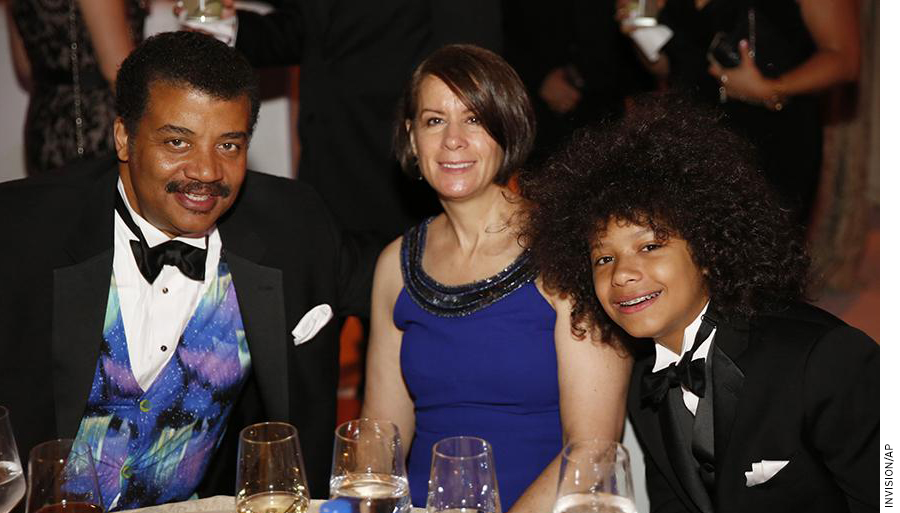
As New York City continues to debate ways to make their schools less segregated following a very contentious rezoning process, a new narrative has emerged:
Parents are willing to go to schools with racial diversity. Parents are even willing to go to schools with socioeconomic diversity. What they are not willing to do is go to schools with academic diversity.
I could not agree more with that assessment. Nobody complains about their kids going to school with Neil DeGrasse Tyson’s kid. I know, because my kid goes to school with Neil DeGrasse Tyson’s kid. And said school is 45% Free Lunch and over 78% non-White.
It’s also the most difficult public Specialized High-School to get into.
In other words, parents of means (white, Black, Latino, Asian) are happy to send their kids to school with poor students (of various religions). As long as their test scores are up to snuff.
Many diversity supporters, to counter the above stance, are also strongly advocating mixed-ability grouping, which they claim offers benefits for all. Those struggling have others to learn from, while those who excel benefit by learning about other students’ different backgrounds. (That last one bothers me. It assumes abilities are distributed via backgrounds. Why can’t kids have completely different math skills, while sharing a similar background?)
Except that mixed-ability grouping, more than race or class, is actually the main obstacle to school desegregation.
I have three children, each with different strengths and weaknesses.
In elementary school, my middle child was so bored by the slow pace of his math class, he would beg not to be sent to school. Once he was moved into a quicker-moving group, his attitude changed 180 degrees.
My daughter, on the other hand, has been struggling since 2nd grade with math and English. In 4th grade, she was put into Special Learning (with an absolutely amazing teacher who knows how to break down the same material being taught in the regular classroom for the kids having trouble), and now she’s caught up to where they think she may be able to rejoin her General Education class in 5th grade.
Finally, I immigrated to the United States when I was 7. I spoke no English, but was put into a 2nd grade, English-only class. I was so lost, I would get up and wander around the room, which was a distraction to other students. The school moved me back to 1st grade for some subjects. I learned so quickly that, the following year, I went straight to 3rd grade. Immersion (NOT English as a Second Language) did the trick. But so did the temporary step backwards.
Based on those experiences, I have a hard time accepting the alleged benefits of mixed-ability grouping. I don’t see how it helps a child who’s reading chapter books to sit through learning what sounds each letter makes. Conversely, I don’t understand how learning to solve 7x=210 is in the best interests of someone who hasn’t yet grasped their multiplication tables.
But then, there’s the story of my oldest son. In middle school, he was struggling with math. He was in the lowest of three ability groups, although he seemed to be trying his best.
Then, his school decided to move him into the middle group. If they’d asked me, I would have said “no.” What’s the point if he’s having a hard enough time as it is?
For those who’ve read my advocacy about letting parents decide whether their child should be placed on an accelerated academic track, no, I haven’t given up on choice. I’m just being honest and confessing that I’m sometimes not the best judge of what’s right for my kid.
Because moving to a more rigorous level improved my son’s math skills. Was it a classic case of mixed-grouping in action or was it, as I found out later (why do kids wait literally years to clue you into a problem it would have been nice to know about it in the moment?), that the bottom group was moving too slowly for him, so he tuned out? (There goes my thinking he was trying his best. I batted 0 for 2 here.)
All I do know is that another proposal of mine, grouping NYC public school kids by ability, rather than age, would not only solve the perennial shortage of Gifted & Talented seats for all who qualify, it would also help with racial and socioeconomic diversity.
If parents no longer thought of non-White, majority Free Lunch schools as synonymous with low test scores, they would be more open to desegregation. It would create productive opportunities for all kids, those at the top – and at the bottom – of the class.
Like all three of mine.
— Alina Adams
Alina Adams is a New York City mom of 3 school-age children. Her website is NYC School Secrets. This post originally appeared on New York School Talk.


